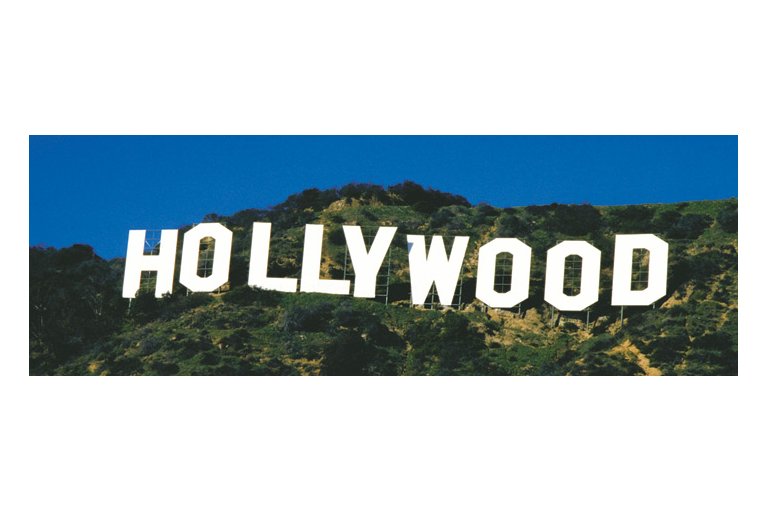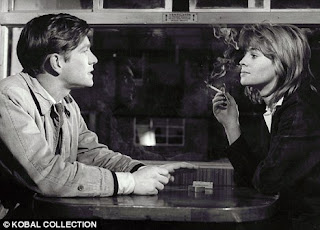 The beginning of the 1960s found a British cinema in transition. The giants of previous decades were mostly on the wane: Michael Powell made one dazzling film, Peeping Tom(1960), but suffered a ferocious critical mauling which shredded his reputation; Carol Reed had a huge hit - and won an Oscar - with the uncharacteristic Oliver! (1968), but none of his '60s films scaled the heights ofThe Third Man (1949). The exception wasDavid Lean, who was now painting on the grandest of canvases. He released just two films in the decade, the monumental Lawrence of Arabia (1962) and the equally epic, if less coherent, Dr Zhivago (1965), but his status as the colossus of British cinema was assured. Of the studios that had dominated the postwar period, only Rank atPinewood and Associated British at Elstree survived, both Ealing andLondon Films having collapsed by 1958. The space they left behind was filled increasingly by American studios, which invested in British films to a degree not seen since the 1930s. The government-backed British Lion, operating as an umbrella for film production and distribution, went some way to keeping afloat a domestic industry already suffering from the impact of television. The trickle of socially conscious films that had begun to emerge at the end of the previous decade now became a high-profile, if shortlived 'new wave'. Saturday Night and Sunday Morning (d. Karel Reisz, 1960) continued the determined northern working-class focus that had already transformed British theatre and literature. Its (anti-) hero, Arthur Seaton, was another 'angry young man' - railing against work and the 'bastards' - of the kind that was now becoming familiar to British audiences. Further examples appeared in the early years of the decade, mostly, likeSaturday Night, by directors associated with the 1950s Free Cinema movement: A Kind of Loving (d. John Schlesinger, 1962), The Loneliness of the Long Distance Runner (d. Tony Richardson, 1962), Billy Liar (d. Schlesinger, 1963) and This Sporting Life (d. Lindsay Anderson, 1963). The films gave opportunities to a new breed of dynamic young actors -Albert Finney, Alan Bates, Tom Courtenay and Richard Harris. By the middle of the decade, the focus was back on London, newly confident as the home of a thriving music and fashion scene that was envied worldwide. The 'swinging London' phenomenon spawned a coterie of films, many of which seemed to be about the failure of their protagonists to get in on the boom - Georgy Girl (d. Silvio Narrizano, 1966), The Knack... (d. Richard Lester, 1965), the Stevenage-set Here We Go Round the Mulberry Bush (d. Clive Donner, 1967). The emptiness of the scene was exposed in Darling (d. Schlesinger, 1965), whose star,Julie Christie, was another of the decade's genuine discoveries. But no mere film star could hope to match the popularity of The Beatles, who developed a more complex screen presence in A Hard Day's Night(d. Richard Lester, 1964), Help! (d. Lester, 1965) and, in animated form, in Yellow Submarine (d. George Dunning, 1968), than had Cliff Richard inThe Young Ones (d. Sidney J. Furie, 1961) and Summer Holiday (d. Peter Yates, 1962). The rather less stellar Dave Clark Five failed to match the Fab Four's screen success with Catch Us If You Can (d. John Boorman, 1965), but it was an interesting debut for its director, who, in what was becoming a depressing trend, immediately upped sticks for Hollywood (although Boorman has made many films here since). Meanwhile, the buzz around all things British attracted several foreign directors to these shores. With Blow-Up (1966), Italian Michelangelo Antonioni delivered an unusually acute 'swinging London' movie, while the Polish Roman Polanski, passing through on his way to Hollywood, offered an even darker vision with Repulsion (1965) and Cul-de-Sac (1966). The visitors also included two leading lights of the French nouvelle vague,François Truffaut (Fahrenheit 451, 1968) and Jean-Luc Godard (One Plus One/Sympathy for the Devil, 1968). Another new arrival was Stanley Kubrick, who made England his home after making Lolita at Elstree in 1961, even if his films didn't always reflect the environment in which they were made; the gargantuan, psychedelic voyage of 2001: A Space Odyssey (1968) did, however, feature a number of Brits among the minor players. Kubrick's fellow American Joseph Losey had arrived some years earlier, and in films like The Criminal (1960), The Servant (1963) andAccident (1967) he brought an analytical outsider's eye to very English subjects. English through and through was the Carry On series, which had begun at the tail-end of the '50s with Carry On Sergeant (d. Gerald Thomas, 1958) and became an institution during the '60s. A total of 16 films appeared before the decade was out, and the series quickly settled into an easily repackaged formula of mildly risqué humour, genre spoof and caricature, with soon familiar names like Sid James, Kenneth Williams and Hattie Jacques reprising equally familiar roles. 1962 heralded the arrival of a still more successful franchise, with the release of Dr No (d. Terence Young). It was a relatively low-key introduction for Ian Fleming's superspy hero James Bond, but the series was well into gear by the time of Goldfinger (d. Guy Hamilton, 1964).Sean Connery had been waiting for a break for half a decade, but the role of Bond fitted him as snugly as the frogman suit he wore for much ofThunderball (d. Terence Young, 1965). Bond became one of the decade's iconic figures, unflappable, sophisticated, sexy and very British. Bond's unstoppable success led to many imitators, the best of which was the trio of films featuring Len Deighton's anonymous masterspy, now given the name Harry Palmer. Michael Caine was already on the rise thanks to Zulu (d. Cy Endfield, 1964), but The Ipcress File (d. Sidney J. Furie, 1965) confirmed him as one of the faces of modern Britain. Its two sequels, Funeral in Berlin (d. Guy Hamilton, 1966) and Billion Dollar Brain(d. Ken Russell, 1967), didn't quite match the first film's impact, but by the end of the decade the former porter from Smithfields meat market was a worldwide superstar, thanks to similarly punchy performances inAlfie (d. Lewis Gilbert, 1966), and The Italian Job (d. Peter Collinson, 1969). Less popular with critics but just as successful with audiences, Hammer Studios extended its Dracula and Frankenstein franchises, but also released a number of imaginative one-offs, among them The Nanny(1965) and Plague of the Zombies (1966), upping the sex quotient as the decade wore on and censorship relaxed. A number of smaller studios, likeAmicus and Tigon, followed in Hammer's wake, throwing up much derivative nonsense, but also the odd gem, like Michael Reeves'Witchfinder General (1968). By the end of the decade, the sheen of youthful optimism was wearing off. The war in Vietnam attracted huge opposition, but carried on regardless. The hippie generation was beginning to recognise that naïve pacifism couldn't hope to compete with entrenched state power that was prepared to use force to crush protest, as events in America, at Ohio's Kent State University and the Chicago Democratic Convention, demonstrated. The strikes and occupations of May 1968 in Paris seemed momentarily to mark the beginning of genuine revolution; a feeling captured in Lindsay Anderson's If.... (1969). Meanwhile, the promise of 'peace and love' was turning to paranoia, madness and despair.Performance (d. Donald Cammell/Nicolas Roeg), completed in 1968 but held back until 1970 by an anxious Warner Bros, showed a very unswinging London, in which the psychedelic dream had turned nightmare. Mark Duguid |
















